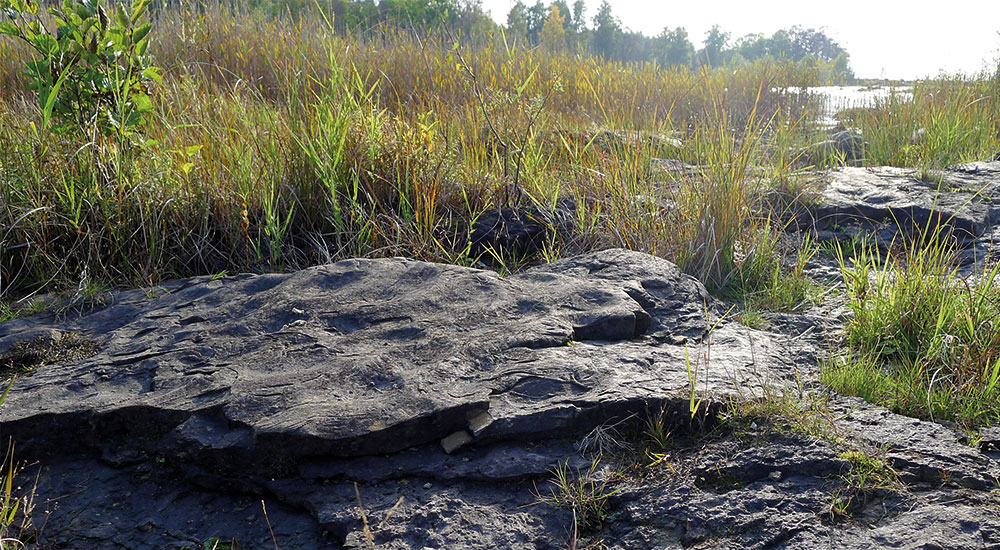
One good place to see this is a short distance north of the harbour, on the lake side of the cobble field. There is a small headland here that you can walk out to.
The bedrock beneath the table mountains has been eroded to a relatively flat surface. Around 550 million years ago Sweden was situated south of the equator. In a shallow sea, sediment was deposited on top of the older bedrock. This solidified and became the sedimentary rocks that we see today at the base of the table mountains. This consists of a metre-thick layer of conglomerate. A conglomerate is a type of rock made up of rounded stones (rounded by the action of water, for example by waves on the shore or in a riverbed) that are bound together. On the rocky shoreline near Råbäck harbour you can see how the conglomerate has been deposited in pockets and cracks in the Precambrian Basement. Sandstone was then deposited on top of the layer of conglomerate, and this can be seen as a clear terrace in the woodland a short distance from the shore. The sandstone layer contains findings after fossils and waves (ripple marks). These tell us about the environment that existed here more than 500 million years ago – an important piece in the puzzle of understanding Earth’s development.


